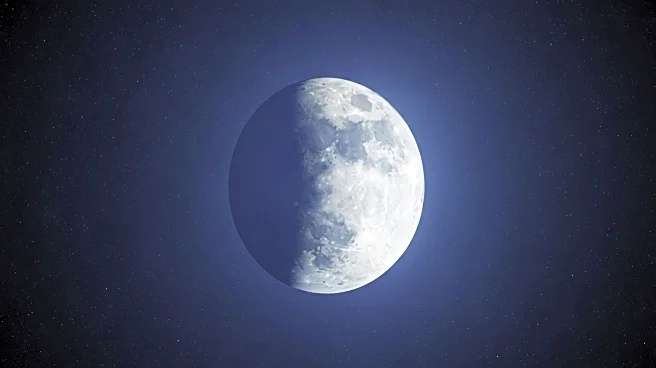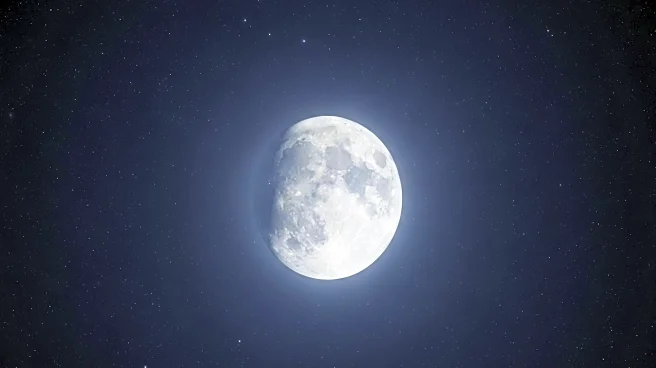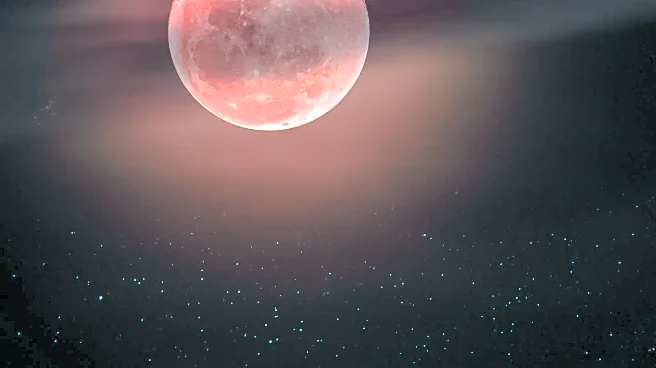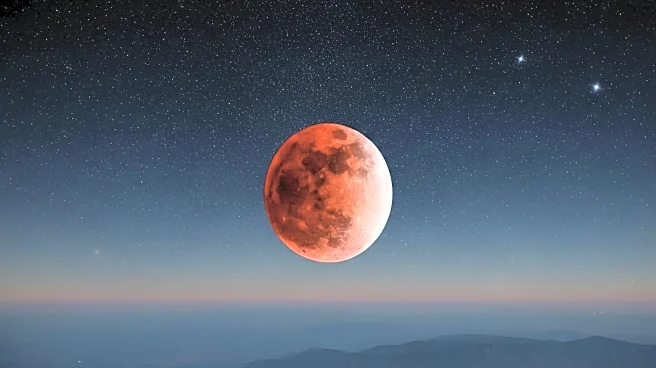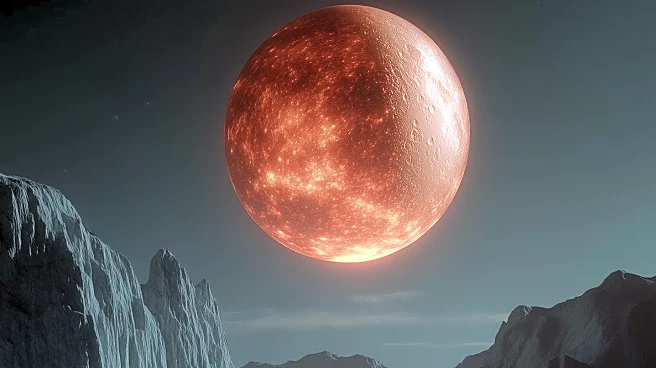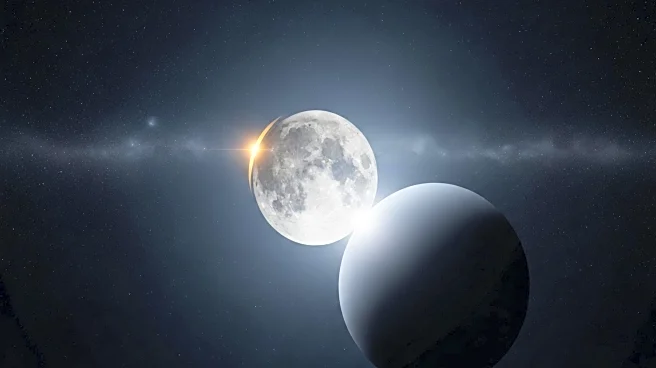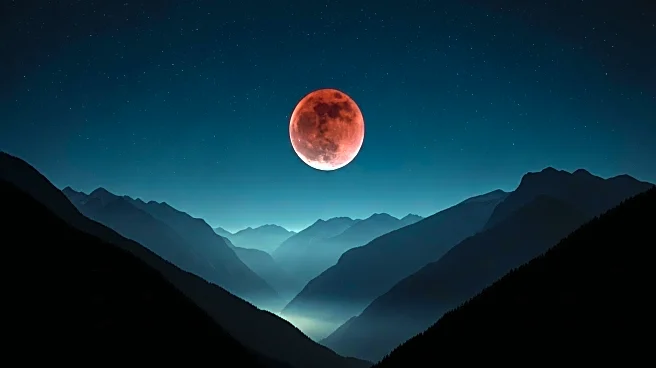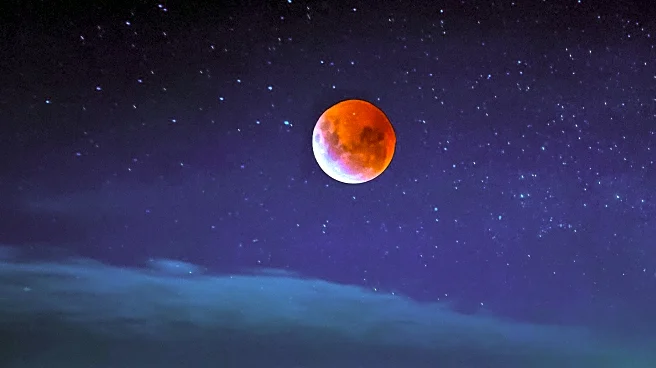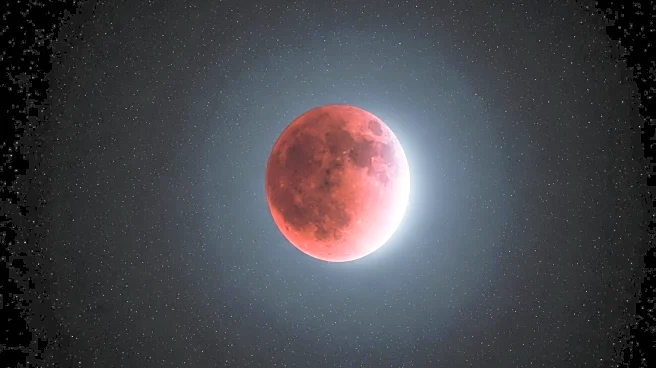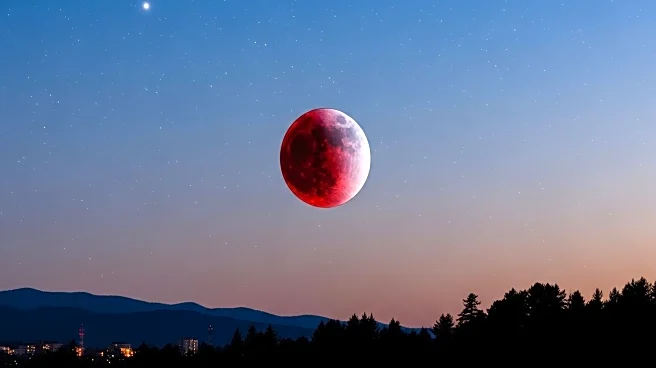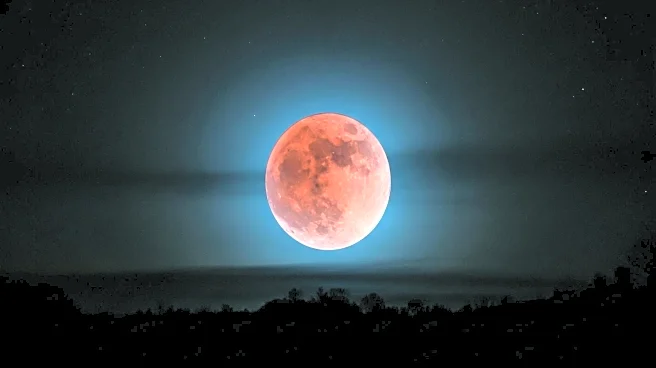What's Happening?
On September 7, 2025, a full moon, known as the Corn Moon, will occur at 2:09 PM EDT. This full moon is typically referred to as the Harvest Moon, but in 2025, the title will be given to October's full moon due to its closer proximity to the autumnal equinox on September 22. A total lunar eclipse will coincide with the full moon, visible from parts of Africa, Europe, Asia, and Australia. Partial eclipse visibility will extend to other regions, including parts of North America. The full moon will be observable in the morning before dawn and in the evening after sunset, with its trajectory taking it near Saturn and Neptune.
Why It's Important?
The occurrence of the Corn Moon and the accompanying lunar eclipse presents a significant astronomical event, offering a unique opportunity for sky watchers and astronomers to observe celestial phenomena. The visibility of the eclipse across multiple continents highlights the global nature of such events, fostering international interest and engagement in astronomy. For regions where the eclipse is visible, it provides educational opportunities and a chance to increase public interest in space science. The event also underscores the importance of astronomical observations in understanding celestial mechanics and the dynamics of the solar system.
What's Next?
Following the Corn Moon, the next significant lunar event will be the Harvest Moon in October 2025, which will be the full moon closest to the autumnal equinox. Observers can look forward to continued celestial events, including the positioning of Saturn and Neptune near the moon. These alignments offer further opportunities for observation and study. Astronomical societies and observatories may organize events and viewing sessions to capitalize on public interest generated by the lunar eclipse and full moon.
Beyond the Headlines
The Corn Moon and its associated lunar eclipse highlight the cultural and historical significance of lunar events. Traditionally, the Harvest Moon has been associated with agricultural cycles, marking a time of harvest and preparation for winter. The shift in the naming of the Harvest Moon to October in 2025 reflects the dynamic nature of astronomical naming conventions, which are based on celestial alignments rather than fixed dates. This event also emphasizes the interconnectedness of global communities through shared natural phenomena, fostering a sense of unity and collective curiosity.
